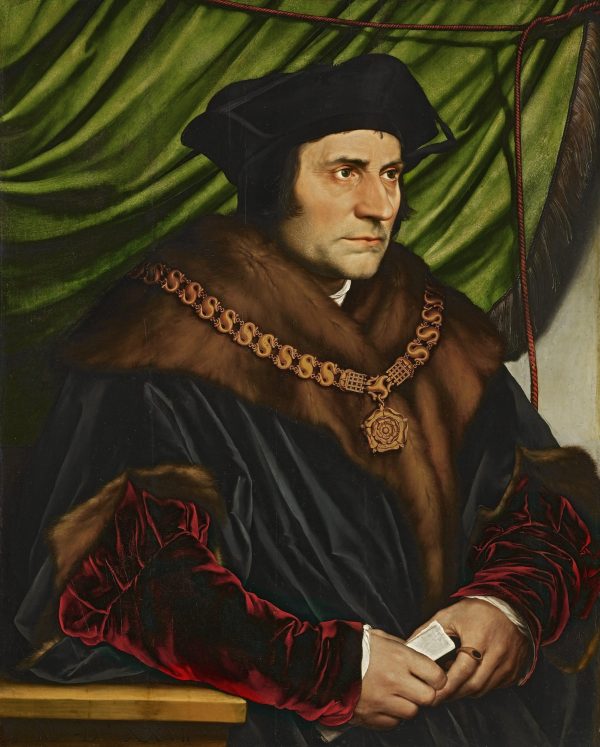
St. Thomas More
Born: February 7, 1478
Died: July 6, 1535
Feast Day: June 22
Patron of: attorneys, salesmen, politicians
I can’t help wondering if Tricky Dick Nixon might have been saved from national disgrace if, instead of a staff of Haldeman, Ehrlichman, and Dean he had a guy named More. Thomas More.
Or if Ollie North and John Poindexter might have had a tougher time getting away with their shenanigans if More had sat in on all those meetings that George Bush missed.
Evidently civil servants with a conscience are as rare in the 1980s as they were in the 1530s- when More lost his head for refusing to play yes-man to his king, Henry VIII.
As a young man, Thomas More pondered becoming a monk but decided it was better “to be a chaste husband than a priest impure.”
When his first wife died young, More soon remarried. He dryly referred to his new wife, Dame Alice (some years his senior), as “neither a pearl nor a girl.”
Meanwhile, More had been making a name for himself as a skillful lawyer, scholar, author, and one of the finest minds in England, which brought him to the attention of the young King Henry VIII.
Thus began More’s swift rise through the ranks of power and finally to the Chancellorship of England.
Despite the affection the king held for him, Thomas kept his position in perspective. “If my head should win him a castle in France,” he once said, “it should not fail to go.”
But it was an English woman, not a French castle, that was to be More’s undoing. When the Pope refused to nullify Henry’s marriage to Catherine of Aragon (that Henry might marry Anne Boleyn), Henry forced the English clergy to submit to his supremacy. At this, More resigned his position, having held it only three years. Thereafter began a battle of wits: between the king, with the forces of law on his side, and his ex-chancellor, one of the finest lawyers in the kingdom.
More refused to swear an oath attesting that Henry’s marriage to Anne Boleyn was a true union, and he refused to comment on Henry’s claim to be head of the church of England. It might be a crime to assert aloud that Henry was not head of the church; but, said More it was not a crime at all to keep silent on the matter. It was a simple and brilliant defense. More was soon arrested and sent to the Tower of London, where Henry sent visitors after visitors to trap him into speaking treason. But the wily More kept his peace for fifteen long months.
More appeared to take his imprisonment in stride; perhaps it appealed to the monk in him. (He often wore a hair shirt and rose at 2 a.m. for hours of study.) when his wife once blew up at his seeming contentment in prison, he simply replied, “Is not this house as night Heaven as mine own?”
But More was not eager to become a martyr. “I have not been a man of such holy living that I might be bold enough to offer myself to death,” he said, “lest God for my presumption might suffer me to fall.”
After false witnesses testified against him, More was convinced of treason. He kept his sense of humor to the end. “See me safe up,” he told the executioner. “For my coming down I can shift for myself .”
This patron saint of lawyers, who died, “the King’s good servant, but God’s first,” was canonized in 1935.
Originally published in Salt magazine, ©Claretian Publications.
Image: Wikimedia Commons








